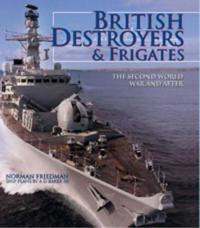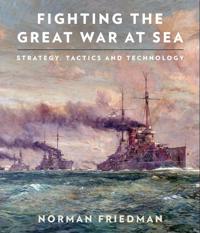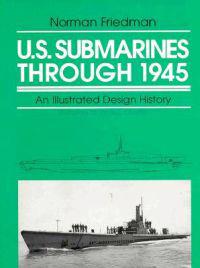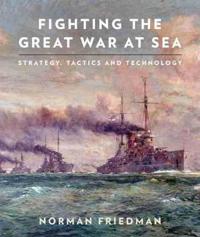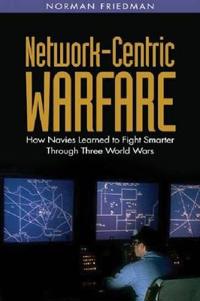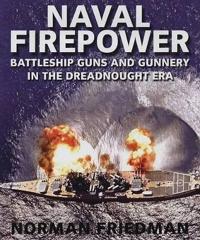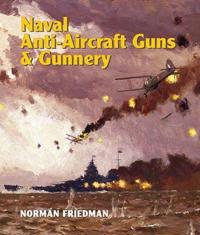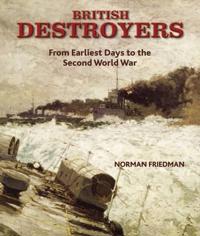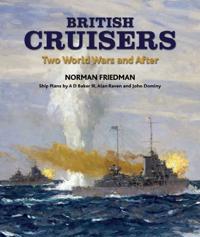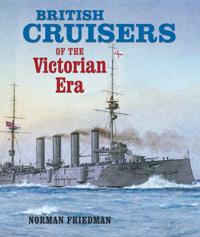British Destroyers & Frigates (Inbunden)
avNorman Friedman, , , , Norman Friedman
ISBN: 9781848320154 - UTGIVEN: 201003Since the Second World War the old categories of destroyer and frigate have tended to merge, a process that this book traces back to the radically different 'Tribal' class destroyers of 1936. It deals with the development of all the modern destroyer classes that fought the war, looks at the emergenc[...]
Fighting the Great War at Sea (Inbunden)
avNorman Friedman, Norman Friedman
ISBN: 9781848321892 - UTGIVEN: 2014-08A radically different interpretation of the First World War providing novel insights into warships and technology of the period.[...]
The Naval Institute Guide to World Naval Weapons Systems (Inbunden)
avNorman Friedman
ISBN: 9781557502629 - UTGIVEN: 2005-11Long recognized as the most comprehensive reference work available on the subject, this guide remains the only complete reference to the weapons currently in service in ships, submarines, and naval aircraft around the world. It is the only book of its type to explain the transformation of the U.S. N[...]
U.S. Submarines Through 1945 (Inbunden)
avNorman Friedman
ISBN: 9781557502636 - UTGIVEN: 199504This series offers detailed descriptions of the evolution of all classes of the principal U.S. combatant types. Each of the seven volumes is fully illustrated with deck plans, outboard profiles, sketches from major design studies, and numerous detailed photographs. The appendixes contain a wealth of[...]
Fighting the Great War at Sea: Strategy, Tactics and Technology (Inbunden)
avNorman Friedman, George Zambellas
ISBN: 9781591141884 - UTGIVEN: 2014-10While the overriding image of the First World War is of the bloody stalemate on the Western Front, the overall shape of the war arose out of its maritime character. It was essentially a struggle about access to worldwide resources, most clearly seen in Germany's desperate attempts to counter the Ame[...]
Network-Centric Warfare (Inbunden)
avNorman Friedman
ISBN: 9781591142867 - UTGIVEN: 2009-03This book explains what network-centric warfare is, and how it works, using concrete historical naval examples rather than the usual abstractions. It argues that navies invented this style of warfare over the last century, led by the Royal Navy, and that the wars of that century, culminating in the [...]
Naval Firepower: Battleship Guns and Gunnery in the Dreadnought Era (Inbunden)
avNorman Friedman, , , , W. J. Jurens
ISBN: 9781591145554 - UTGIVEN: 200801Naval Anti-Aircraft Guns and Gunnery (Inbunden)
avNorman Friedman
ISBN: 9781591146049 - UTGIVEN: 2014-02British Destroyers (Inbunden)
avNorman Friedman
ISBN: 9781848320499 - UTGIVEN: 200910"First published in Great Britain in 2009 by Seaforth Publishing"--T.p. verso.
British Cruisers (Inbunden)
avNorman Friedman
ISBN: 9781848320789 - UTGIVEN: 201011For most of the twentieth century Britain possessed both the world's largest merchant fleet and its most extensive overseas territories. It is not surprising, therefore, that the Royal Navy always showed a particular interest in the cruiser - a multi-purpose warship needed in large numbers to defend[...]
British Cruisers (Inbunden)
avNorman Friedman
ISBN: 9781848320994 - UTGIVEN: 201210Gradually evolving from the masted steam frigates of the mid-nineteenth century, the first modern cruiser is not easy to define, but for the sake of this book the starting point is taken to be Iris and Mercury of 1875. They were the RN's first steel-built warships; were designed primarily to be stea[...]
Naval Weapons of World War One (Inbunden)
avNorman Friedman
ISBN: 9781848321007 - UTGIVEN: 2011-11Although the Great War might be regarded as the heyday of the big-gun at sea, it also saw the maturing of underwater weapons - the mine and torpedo - as well as the first signs of the future potency of air power. Between 1914 and 1918 weapons development was both rapid and complex, so this book has [...]
Naval Anti-Aircraft Guns and Gunnery (Inbunden)
avNorman Friedman
ISBN: 9781848321779 - UTGIVEN: 2014-01This book does for naval anti-aircraft defence what the author's Naval Firepower did for surface gunnery - it makes a highly complex but historically crucial subject accessible to the layman. It chronicles the growing aerial threat from its inception in the First World War and the response of each[...]

